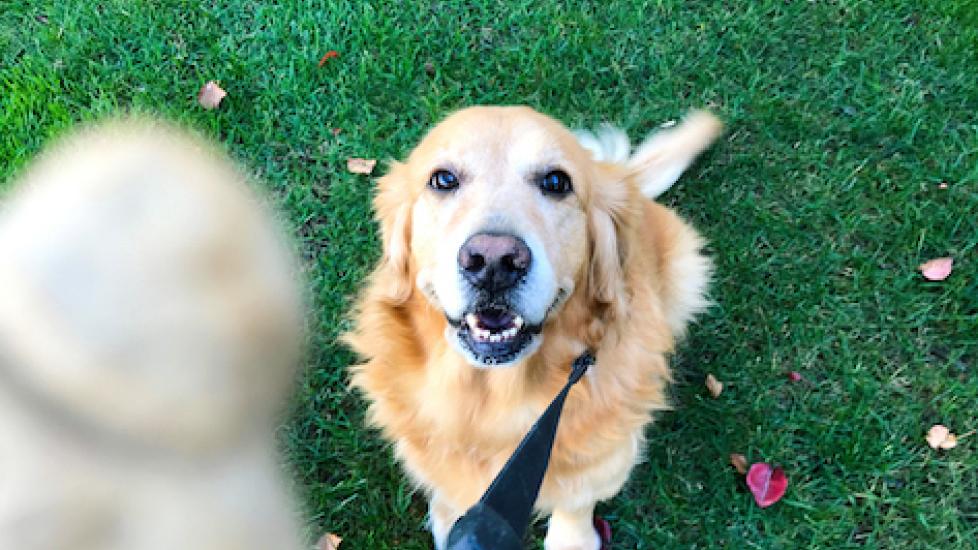Essential Senior Dog Training Tools
By Victoria Schade
Training your dog is an opportunity to develop a common language, cement your bond, and challenge your dog’s brain in a way that physical exercise alone can’t touch. But many think that dogs in their golden years are beyond training, whether it’s their ability to add skills to their long-standing repertoire, or questioning their drive to even attempt to learn something new.
The good news is, you can teach an old dog new tricks. Dogs never lose their willingness to experiment and play in the name of training. That means that your seemingly lazy senior has untapped potential, and your new-to-you rescue oldie will be more than willing to go back to school. While science-backed, dog-friendly training is the same no matter your dog’s age, there are a few special considerations for dogs with a little gray around the muzzle.
How to Train a Senior Dog
As with all dogs, the training methodology you use should reflect what we understand about how dogs learn, which means that positive reinforcement training is the way to go. One of the best (and most fun) ways to work with senior dogs is to turn the process into a game, and nothing makes that easier than clicker training. The clicker is a small plastic device that precisely marks the moment your dog has performed the correct behavior, which is then followed by a savory treat. The dog quickly makes the connection between the behavior that accompanied the sound of the click and the resulting treat.
Clicker training can be used for basic commands like sit, down, stay and come and for more complex behavioral problems, like leash aggression and reactivity. This methodology allows dogs to be creative and think for themselves, which will encourage older dogs to get off the couch and tap into their brain power.
Older dogs require smart treat selection because of the number of rewards given during a typical training session. Treat size is important since seniors’ decreased activity levels can make them prone to weight gain. Use petite treats about the size of a fingernail, and if possible, try to select treats that contain glucosamine, which supports joint heath. Senior students might also have missing teeth or sensitive gums, so opt for treats that are easy to chew. You can also incorporate some of your dog’s daily meal ration into training time, so your dog gets a mixture of high-value goodies and standard kibble that won’t impact his weight, as long as it’s subtracted from his daily total.
That said, treats aren’t the only reward option when training with an older pup. Engaging your senior in play while you train is another way to keep the old bones moving. Find a toy that you know your dog loves, like a ball, tug toy or stuffed animal, and use it as a reward when he performs a behavior correctly. For example, call your dog to you, and when he gets to you, toss his favorite ball instead of giving him a treat. This keeps both your dog’s brain and body enriched as you work on learning new behaviors together.
Even though older dogs might have the desire to keep learning, sometimes their bodies can’t keep up with the physical demands. Between the extra pounds, stiff joints, and age-related aches and pains, seniors might find it tougher to move through a sit-down-come sequence, particularly on slippery floors. Working on carpeted surfaces will help your older student find his footing. Or, you can purchase a thin rubber yoga mat to use as your dog’s “place” on slick floors, which will give your dog extra traction as he holds a stay or moves from lying down to standing.
The goal of training your senior dog is to have fun while you work on new skills together. That means that patience and a sense of humor are key. It might take your dog a few minutes of shuffling before he settles into a down, and perhaps his recall is more of a trot than a sprint. As long as you’re making progress (no matter how slow) and you’re both enjoying the process, you’re headed in the right direction. With your gentle guidance, you’re sure to be amazed by how much your senior dog can still do.
